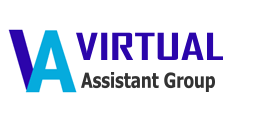Energy Efficiency
/in Uncategorised /by admin
Energy Efficiency with the Help of a Virtual Assistant
In today’s digital world, efficiency is not just about getting more done — it’s about using your energy wisely. Many professionals focus on time management but overlook energy management — the ability to channel your focus, motivation, and mental clarity toward meaningful work.
That’s where a Virtual Assistant (VA) can make a difference. A VA doesn’t just handle your workload — they help you protect your energy, eliminate unnecessary stress, and maintain balance in your business and personal life.
Here’s how hiring a Virtual Assistant can make your workflow more energy-efficient and sustainable.
1. Identify Where Your Energy Is Being Wasted
The first step to improving energy efficiency is recognizing where your energy goes. Many professionals drain themselves on repetitive, low-value tasks that add little to long-term goals.
Common energy drains include:
Checking and replying to endless emails
Scheduling or rescheduling meetings
Data entry and routine admin tasks
Managing social media posts manually
Searching for files or information repeatedly
Ask yourself:
Which tasks make me feel exhausted but aren’t high-impact?
What can someone else do just as well (or better)?
Where does my focus get interrupted most often?
Once you identify your main drains, you’ll know exactly what to delegate to a VA to conserve your energy.
2. Delegate Repetitive and Low-Energy Tasks
One of the biggest benefits of a VA is removing repetitive tasks that consume your mental bandwidth. When you hand off these responsibilities, you reclaim hours of focus and creative capacity.
Tasks to delegate for maximum energy efficiency:
Inbox management and filtering priority messages
Calendar organization and scheduling
Routine data entry and report updates
Basic content formatting or posting
Travel bookings and reminders
Customer or client follow-ups
Result:
You free up your brain from “busy work” and spend your energy on decision-making, planning, and innovation — areas that drive growth.
3. Build Systems That Run Smoothly
Energy efficiency isn’t just about what you delegate — it’s also about creating systems that minimize friction and confusion. A good VA can help you set up organized, automated workflows that save time and mental effort.
Systems your VA can create or manage:
Task management boards (Trello, ClickUp, Asana)
File organization in Google Drive or Dropbox
Automation for scheduling or invoicing
Templates for emails, reports, or social media posts
Daily checklists and progress tracking
When your processes are systemized, you spend less time making micro-decisions and more time focusing on meaningful, high-energy work.
4. Manage Your Time Around Energy Peaks
Effective time management starts with understanding your energy rhythms. You don’t have equal focus all day — your energy fluctuates. A VA helps you plan your schedule around your natural productivity cycles.
Your VA can:
Block time for deep work during your high-energy hours
Schedule lighter tasks or breaks during low-energy periods
Prepare your next day’s agenda in advance
Remind you of upcoming deadlines and priorities
Handle meeting coordination to reduce back-and-forth messages
Why it matters:
When your day aligns with your energy levels, you stay productive without burnout. You’ll get more done in fewer hours with greater focus.
5. Improve Communication Flow and Reduce Mental Clutter
Poor communication often drains more energy than actual work. Too many emails, unclear updates, and unnecessary meetings create mental overload. A VA can help streamline communication, making every exchange purposeful and efficient.
How your VA can optimize communication:
Create a structured reporting system (daily or weekly summaries)
Use collaboration tools like Slack or Notion for quick updates
Filter unnecessary notifications or spam emails
Manage client messages and respond to FAQs
Organize documents and messages for easy retrieval
The outcome:
You’ll spend less time sorting through clutter and more time thinking strategically. Clarity in communication is one of the most overlooked forms of energy efficiency.
6. Track Progress and Adjust Workflows
Energy efficiency improves with awareness. Regularly reviewing what’s working — and what’s draining you — helps you refine your systems over time.
What you can track with your VA:
Hours spent on specific tasks
Energy levels during different work periods
Task completion rates
Time saved through automation or delegation
Areas where new processes could save more effort
Ask your VA to prepare a simple weekly performance summary. This helps identify bottlenecks, adjust priorities, and maintain a healthy workflow balance without overexerting yourself.
Energy efficiency isn’t just about conserving power — it’s about managing your physical and mental energy wisely. By delegating routine tasks, organizing workflows, and maintaining balance with the help of a Virtual Assistant, you can work smarter, stay energized, and achieve more with less effort. Contact us today by BOOKING A FREE CONSULTATION at 1-877-263-7064 or click here to schedule a meeting with us. Let’s collaborate to achieve your business goals!
